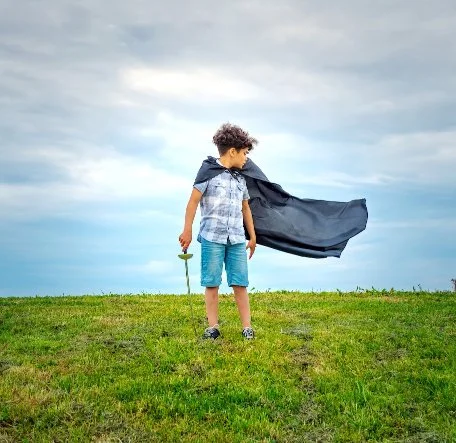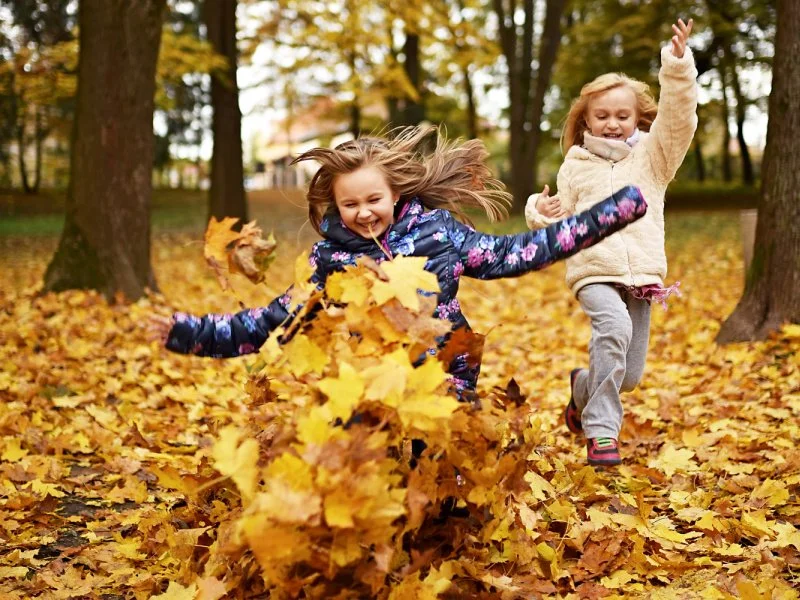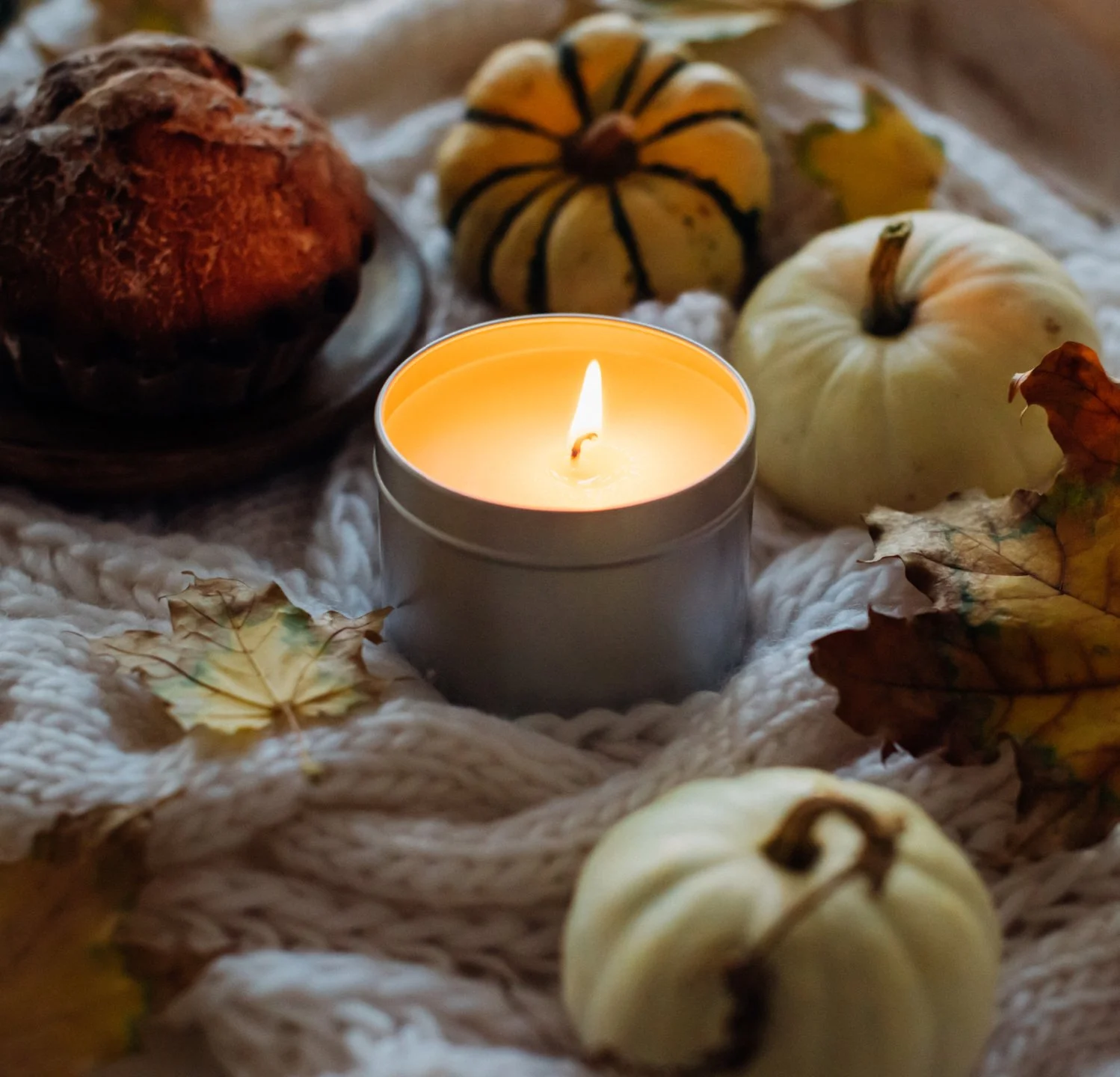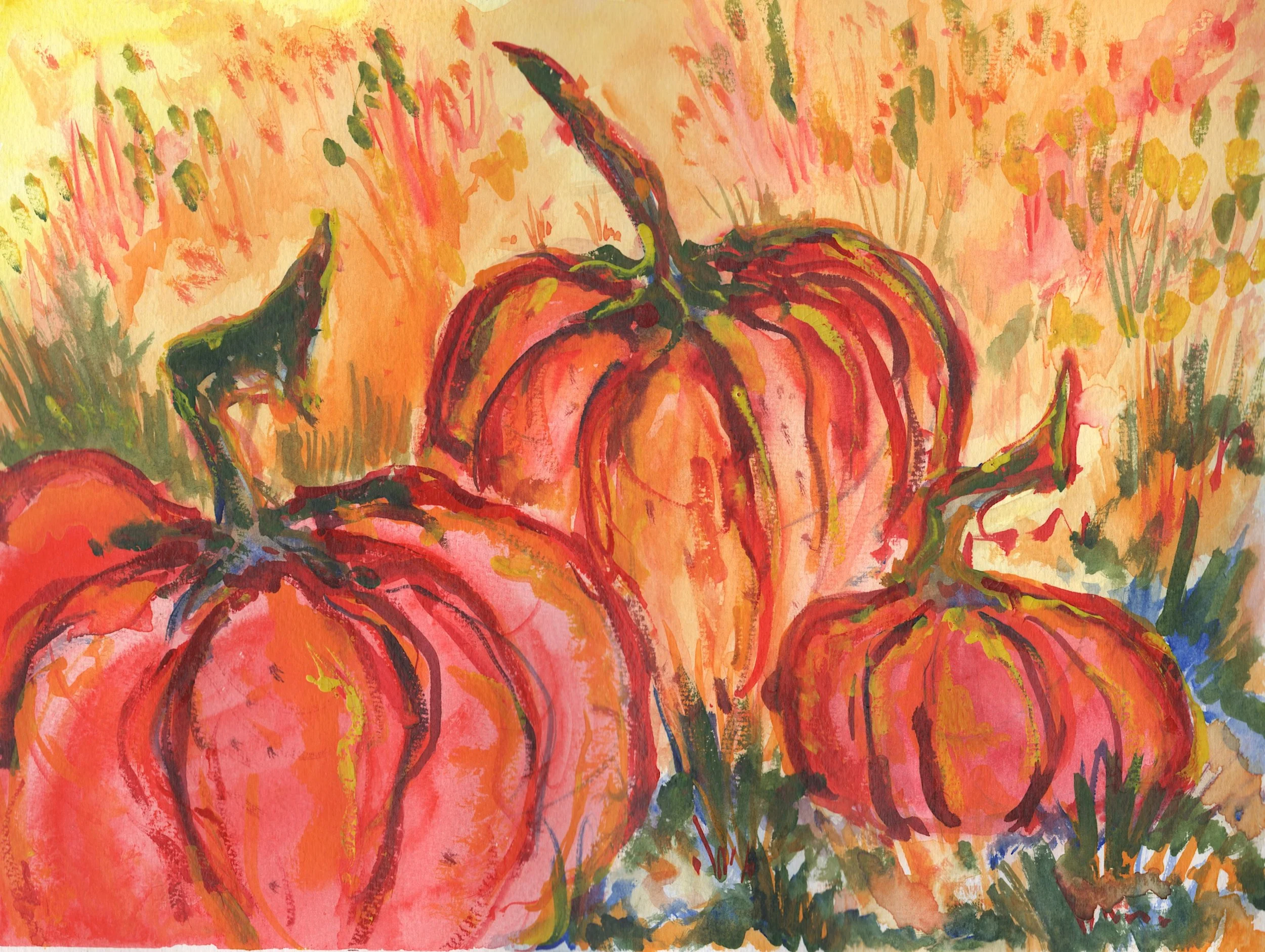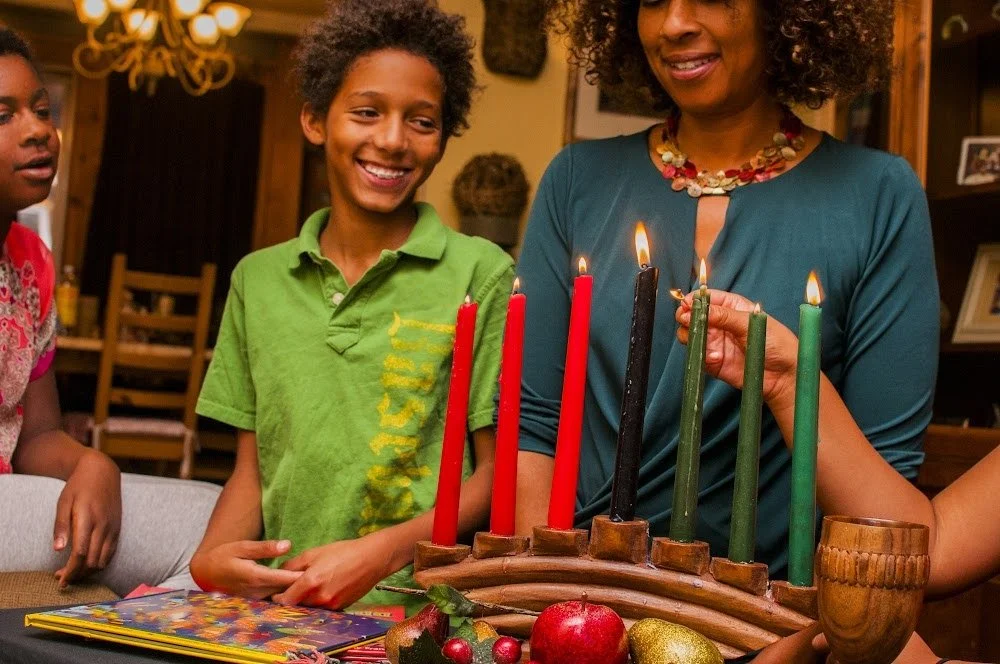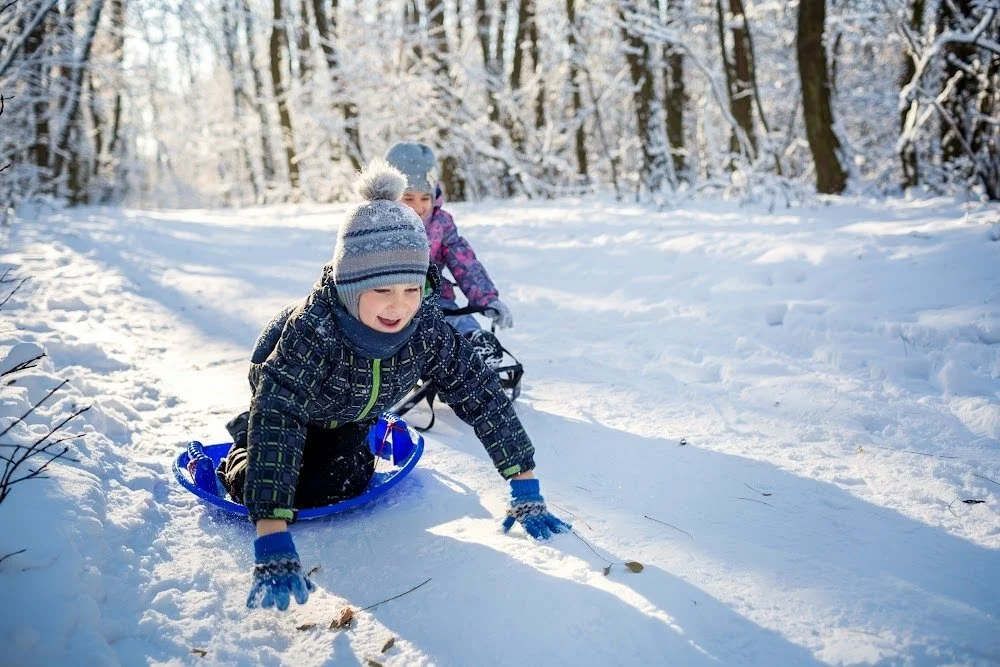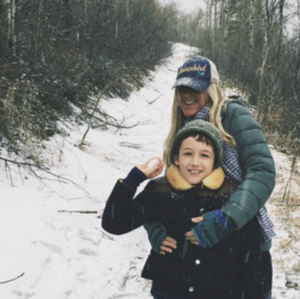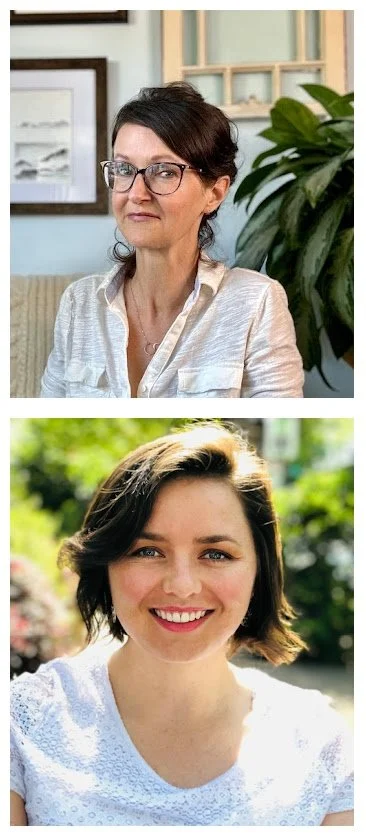
Waldorfish Blog
Michaelmas: Meeting the Dragon in Today’s World
Michaelmas inspires us to meet our own dragons.
As the days grow shorter, many Waldorf families turn their attention to Michaelmas.
For those new to the tradition, Michaelmas is a festival celebrated around September 29th, honoring St. Michael, the archangel who brings courage, strength, and the will to do good in the face of challenges.
In Waldorf circles, this festival marks a turning point in the year - a time to gather our inner strength as the outer world moves into darker days. Just as nature shifts toward winter, we too are called to look inward, to ask: What is my dragon, and how will I meet it?
Two Ways of Meeting the Dragon
In stories of St. Michael, the dragon is a central figure, and how we think about the dragon can shape the way we celebrate.
Overcoming the Dragon
Some traditions emphasize Michael as the conqueror of evil. Here, the dragon represents all that is destructive: fear, greed, hatred, selfishness. In this telling, Michael defeats and kills the dragon, freeing the land and people from its shadow. The lesson is about courage - facing darkness directly and not letting it rule over us.
Michaelmas can be a time for transformation and facing challenges.
Transforming the Dragon
Others in the Waldorf community lean toward a gentler perspective: the dragon is not annihilated, but rather subdued and transformed. This view sees the dragon as our inner challenges - anger, laziness, pride, or despair - that can, if harnessed, become forces for good. Instead of banishing the dragon, we bring it into balance, learning self-mastery and compassion.
Both perspectives offer valuable lessons for children (and for adults, too). Sometimes we must confront destructive forces directly, with a firm “no.” Other times, we are called to listen, understand, and work with the dragon, recognizing that within struggle lies the seed of transformation.
Michaelmas Messages for Our World Today
Looking around us this year, it’s not hard to see dragons. They may not be literal beasts with scales and fire, but they show up in many forms. You hardly need me to list them for you, but the writer in me feels compelled to provide examples - here are a few:
Global uncertainty and conflict
Environmental challenges
The pull of fear and division in our communities
Even the overwhelm of modern life
So how can we bring the spirit of Michaelmas into these realities - and into the lives of our children?
Cultivating Courage: Michaelmas reminds us that courage isn’t the absence of fear, but the strength to act even when we’re afraid. Children can learn that bravery doesn’t only mean big heroic deeds; it can also mean telling the truth, being kind when it’s difficult, or trying something new.
Facing Our Own Dragons: Each of us can ask: What dragon am I facing right now? Is it exhaustion, discouragement, or maybe comparison? Naming the dragon is the first step to transforming it.
Working Together: In the stories, Michael doesn’t fight for glory; he acts for the good of the whole community. That’s a message our children deeply need - that our choices and actions ripple outward and can bring light into the world.
Strengthening the Will: Autumn is a time for establishing rhythms - schoolwork, household habits, even seasonal crafts and cooking. Each small act of discipline builds the inner strength that Michaelmas calls forth.
Bringing It Home
Celebrating Michaelmas doesn’t require elaborate pageantry. You might:
Tell or act out a dragon story with younger children.
Bake dragon bread and let the kids “slay” it by pulling it apart.
Take a nature walk, noticing the shift toward autumn, and talk about the courage we can draw from the turning of the year.
Invite older children to reflect on their “dragons” and set an intention for the season ahead.
Michaelmas can inspire reflection for parents and children alike.
Ultimately, Michaelmas is less about what we do and more about what we carry: the will to meet challenges with courage, compassion, and light. In a world that often feels uncertain, the image of Michael standing tall with sword and scales can inspire us all - not to escape the dragons, but to face them, and perhaps even learn from them.
A Reflection for Parents
As we move into this season of Michaelmas, take a quiet moment for yourself:
What “dragon” feels most present in your life right now?
Does it need to be bravely overcome with a firm boundary, or gently transformed with patience and understanding?
How might you model that process for your children in simple, everyday ways?
You may even wish to light a candle one evening after the children are in bed, hold that image of Michael with his sword of courage, and ask yourself: What small act of bravery can I carry into tomorrow?
A Reflection for Children
You might ask your child:
“If you had a dragon living nearby, what do you think it would look like?”
“What dragon do you think lives inside of you? Is it a dragon of fear, or of grumpiness, or maybe of not wanting to try something new?”
“What would it feel like to be brave in front of that dragon?”
“Do you think your dragon needs to be tamed, like a pet, or defeated, like in a knight’s story?”
Encourage your child to draw, tell a story, or act it out - it doesn’t need to be serious or “right.” The goal is to help them imagine courage in a playful way that they can carry into real-life challenges.
About the Author
Robyn Beaufoy is Waldorfish’s CEO, and a course instructor for some of our courses - Waldorf Art for Beginners, Weekly Art Foundations, and Simple Season. You’ll find her intuitive touches and influences throughout everything Waldorfish offers! Robyn has been in the world of education for over 25 years, with an MA in Education and a certification in Waldorf teaching - she also homeschooled both of her children. In 2012 Robyn co-founded Waldorfish.com, creating it with the vision of making Waldorf inspired-art and pedagogy more accessible, joyful, and doable for homeschoolers all over the world.
Simplifying the Holidays: A Path to Joy and Connection
Choose simplicity this season.
The holiday season is a time of celebration for many around the world, but it’s also easy for it to become a time of overwhelm.
During the months of November and December, we often find ourselves caught in a whirlwind of to-do lists, shopping, decorating, and preparing for gatherings. Whether you're celebrating Hanukkah, Kwanzaa, Christmas, Yule, or another holiday, the push to create the perfect festive experience can overshadow the deeper meaning of the season.
Here at Waldorfish, we believe that simplicity and intention are key to creating a joyful, connected holiday season. No matter which traditions you hold dear, the true magic of the holidays lies in connection, presence, and shared moments with loved ones. Here’s how we can return to the heart of the season, creating a time of peace, joy, and togetherness.
1. Reframe Gift-Giving
Gift-giving is central to many holiday traditions, from the exchanging of gifts on Christmas morning to the lighting of the Hanukkah candles alongside small, meaningful presents. But these gifts don’t have to be extravagant or numerous.
Shifting the focus from quantity to quality can bring deeper meaning to the season. Consider giving experiences vs. things.
Consider creating or exchanging handmade gifts, or sharing experiences as gifts. For example, during Kwanzaa, you might explore ways to make thoughtful, creative gifts that honor the principle of Ujamaa (cooperative economics), focusing on supporting artisans or small businesses. Whatever holiday you celebrate, the goal is the same: to give from the heart, and to embrace the joy of giving without the pressure of excess.
2. Pare Down Traditions
Many families feel the weight of multiple holiday traditions—some inherited, some newly created. If you celebrate more than one holiday, like both Yule and Christmas, the calendar can quickly become overwhelming with activities and events.
Take a step back and consider which traditions hold the most meaning for you and your family. Perhaps you keep the Solstice simple, with a family bonfire to mark the return of the light, and save other festive activities for another day. If you're celebrating Hanukkah, maybe you choose just one night to gather with extended family, making the rest of the evenings more intimate and focused on your household.
The holidays don’t have to be packed with events to be meaningful. Choose the moments that truly bring you joy, and let the others fall away.
3. Create Space for Creativity
Where can you create space for creativity this season?
Creative expression is a wonderful way to bring simplicity and connection into the holidays. No matter which holiday you’re celebrating, making time for crafts, homemade decorations, or baking can create special moments of togetherness.
You might create handmade decorations for your Christmas tree, or craft Kwanzaa kinara candles together. During Hanukkah, you could engage in simple art projects like painting dreidels or making homemade gelt (chocolate coins). For families celebrating the winter solstice, creating nature-based crafts such as wreaths or sun catchers can help bring the outdoors in and honor the season. The focus is on creativity, not perfection. These moments of making allow us to slow down and enjoy each other's company.
4. Embrace Nature
No matter which winter holiday your family celebrates, nature provides a soothing counterbalance to the busyness of the season. Taking time to connect with the natural world can ground us and help us rediscover the beauty in simplicity.
A winter walk, gathering pinecones or greenery, or simply sitting by a window to observe the changing light of the season can bring a sense of peace and calm. If you celebrate Yule, you may already incorporate elements of nature, like evergreens and candles, to honor the winter solstice. Even if nature is not a traditional part of your holiday, spending time outdoors can offer a quiet moment of reflection and renewal in the midst of the festivities
Being present is a true gift not just for yourself, but for your family!
5. Focus on Presence, Not Perfection
Whether you're lighting candles for Hanukkah, gathering for a Christmas feast, or celebrating Kwanzaa with stories and song, the pressure to create a “perfect” holiday can be immense.
But what if we let go of perfection and instead focused on being present?
When we stop striving for the flawless holiday meal or the perfectly decorated home, we create space for the true spirit of the season to emerge—connection, love, and presence. Let the kids hang their handmade ornaments, even if they don’t match the theme. Simplify the meal if it allows for more time together around the table. The holidays become more meaningful when we focus on the people we’re with rather than the pursuit of perfection.
6. Honor Rest
The holiday season often brings a sense of busy-ness, but it’s also a natural time for rest. In the colder months, nature itself slows down, inviting us to do the same.
In many traditions, the holidays are a time of reflection and renewal. The winter solstice, for example, marks the longest night of the year, a time for quiet contemplation and honoring the darkness before the return of the light. In the spirit of this, you can give yourself permission to rest during the holidays, whether it’s an afternoon nap, a quiet evening with a book, or simply a day spent at home with no plans. Rest is essential for recharging and fully enjoying the moments of celebration.
Simple and meaningful celebrations bring true JOY! to your family gatherings.
By simplifying the holidays, we create space for what truly matters—presence, connection, and creativity.
Whether you’re celebrating Christmas, Hanukkah, Kwanzaa, Yule, or any other holiday, the heart of the season remains the same: it’s a time to come together, to share joy, and to honor what’s most important in life. This year, let’s embrace simplicity and return to the essence of the holidays—one of love, peace, and togetherness.
Happy holidays from Waldorfish, where creativity and connection come first!
More from Waldorfish:
About the author:
Robyn Beaufoy is Waldorfish’s CEO, and also the course instructor for Simple Season, Waldorf Art for Beginners, and Weekly Art Foundations. You’ll find her intuitive touches and influences throughout everything Waldorfish offers! Robyn has been in the world of education for over 25 years, with an MA in Education and a certification in Waldorf teaching - she also homeschooled both of her children for some of that time. In 2012 Robyn co-founded Waldorfish.com, creating it with the vision of making Waldorf inspired-art and pedagogy more accessible, joyful, and doable for homeschoolers all over the world.
Celebrating Waldorf Festivals with Teens: A Time for Changing Roles
Festival life is the heartbeat of Waldorf Education.
Festivals as practiced in Steiner schools and homeschools are linked to larger rhythms in the natural world, the meanings of which have been interpreted over time and passed down along cultural and generational lines.
The youngest of Waldorf students are so earnest in their participation in these rituals. But what happens as our children reach their teens?
Do we give up on festival life and hope that they remember these early days and ways of relating to the world, researching them on their own when they are adults?
Festivals can be a family affair, for a wide range of ages!
Maybe. But perhaps there is another way.
My son’s earliest memories of Waldorf festivals are from the brick-and-mortar school he attended between the ages of 3-7. Of that period of time he shares:
“I always had a lot of fun. Advent was one of my favorites, I loved the spiral. I also liked the May Faire and the May Pole, seeing all the patterns get braided…those are the two I remember the most.
On Candlemas our teacher gave us two strings with metal nuts tied to the ends. We’d line up next to a big basin full of melted wax, and take turns dipping, walking in a circle over and over until we had full-sized candles.
In Kindergarten, on Santa Lucia Day, an 8th grade girl came through our classroom with lit candles in a wreath on her head with all the second graders following her, singing. I enjoyed that festival.”
(At this point he begins humming the song associated with Santa Lucia: “Santa Lucia, Thy Light Is Burning…”)
Simple, meaningful work makes festivals special and enriching for the whole family.
Beauty and ritual make an impression on the soul – he is now 13.
What stands out to me through the soft focus of memory is the anticipation of seasons: color, a return to the same rituals year after year, a sense of time passing and miles traveled along with the safety of a return to a spiritual home base.
Festivals have the power to connect us to one another and the natural world in ways that supersede language. We feel the magic of the Mystery to which most all spiritual disciplines point as our genesis.
The wonder inherent in these festivals is very easy to communicate to young children non-verbally, because their experience of the world does not shift to the intellectual sphere until late childhood.
“The third seven-year phase of childhood is one in which thinking prevails…[the] capacity for critical thinking shows itself in a pronounced way with the onset of adolescence and particularly at the beginning of high school. ”
I have found that if I am subtle about the approach to festival life, my son is more than happy to participate in the rituals that defined his younger years. From reading stories to activities such as baking bread, making candles, crafting floral arrangements and doing art, we always seem to find common ground related to a feast day.
This past February, to acknowledge Imbolc (the calendar day between the Winter Solstice and the Spring Equinox) we made beeswax candles, but not before an -- awkward, truthfully -- exchange about how to approach the related story from “A Festival Year”.
I began to read it aloud, and immediately felt self-conscious. I subsequently handed it to my son, who then began reading it silently to himself. Suddenly, he stopped and looked up at me. As if reading his mind, I smiled and said, “You want me to read it.”
“I do,” he replied.
So I did.
At the end of the tale, which was listened to with this whole being, he told me that he still loves hearing stories in my voice.
A final thought, about families with multiple children: festival days are a great way to give the older kids an opportunity to teach the younger ones.
How can your teenager take on more of an active role in your family’s festival life?
Menu, craft, and activity planning are all aspects of festival life in Waldorf education that need attending to. Our experience has been that they LOVE being tasked with helping to bring the festival to the younger children. This shifting of roles helps to re-awaken what’s already living inside them.
Ask them what they love most or remember the most vividly from past years, and be sure to include those elements. Remember that children in the middle grades may land somewhere between wanting to participate without doing the planning, and taking the lead on doing the planning themselves.
This is developmentally appropriate, there is no one-size-fits-all approach.
The most important aspect of festival life is to remain curious and open to the spirit of the season, trust that it will speak through your family, and above all, enjoy it.
*Cue Celebration, by Kool and the Gang*
Cristina Havel lives in Southern California where she and her husband have worked together for nearly 2 decades. They homeschool their son using the Waldorf pedagogy as a guide and believe in the transformative powers of art and nature.
Doing it Your Way: Celebrating Michaelmas!
Happy fall! (Well, almost. Can you tell we’re just a little excited for the change of seasons?)
Fall is a wonderful time to enjoy the change of seasons, and celebrate Michaelmas!
In our part of the world, this season brings with it the start of a new school year, and with that, a new routine, curriculum, social group, and so many other things! It’s certainly a time of excitement.
It can also be a time where things feel challenging, and possibly, as though they haven’t quite fallen into place yet.
So, it can feel like a lot when we remember that Michaelmas, one of the major festivals for the year, is just around the corner after school begins!
But there’s no need to worry – Michaelmas (as with all festivals, in our opinion, click here for more on that!) does not need to be complicated, and should not induce more stress in your daily life.
It’s hard not to get caught up in the FOMO for this particular festival, especially when some Waldorf schools and families dedicate a large amount of time to building elaborate dragons, or baking all day, or...or...or!
Fall pumpkins: a wonderful subject for your next watercolor painting!
But before you find yourself spiraling, take a minute to ask:
What is meaningful to MY family?
What would feel sincere to us?
And above all: how can I make this festival feel special in a simple, doable and enjoyable way?
In a nutshell, celebrating Michaelmas is about standing up for what’s right, taming the “dragon” within, and choosing to follow the path of light, joy, and goodness, even in the most difficult and challenging of circumstances.
With that in mind, we’ve got some resources for you, to help you design your Michaelmas celebration in a way that fits your family best. (Just click the links below!)
For some, making wooden swords is a Michaelmas tradition!
Dragons for Michaelmas
Building a dragon is a popular activity to celebrate Michaelmas, so we’ve put together some inspirations for you! Perfect for little and big hands alike.
On Dragons and Making Swords
What exactly is Michaelmas, and how does it apply to raising children in our modern world? Enjoy this piece written by our guest writer Christy Corp-Minamiji, and discover how Michaelmas can lead us to talking with our children about the dragons we encounter in our everyday lives.
In Praise of Balance
The title speaks for itself: we are all about building a festival life that’s in balance, and truly meaningful experiences that work for you and your family. This blog post is the perfect place to go if you need a little encouragement, inspiration, and permission to keep it simple!
Head to our Pinterest board for Michaelmas and Autumn seasonal inspiration!
Michaelmas Pinterest Board
Dragon bread, dragons, swords: our pinterest board has it all!
Festival Life in 2020
It’s safe to say that our lives aren’t quite back to the “normal” we knew before 2020, and we’re all still trying to find the best and most doable ways to make festival life work in these new times. Be sure to check out this blog post by our guest writer Cristina Havel, and find some inspiration for how to make Michaelmas and other festivals feel special, even in trying times.
Enjoy!
About the Authors
Robyn Beaufoy is Waldorfish’s CEO, and a course instructor for two of our courses - Waldorf Art for Beginners and Weekly Art Foundations. You’ll find her intuitive touches and influences throughout everything Waldorfish offers! Robyn has been in the world of education for almost 30 years, with an MA in Education and a certification in Waldorf teaching - she also homeschooled both of her children. In 2012 Robyn co-founded Waldorfish.com, creating it with the vision of making Waldorf inspired-art and pedagogy more accessible, joyful, and doable to homeschoolers all over the world.
Caitlin Amajor is Waldorfish’s course instructor for Geometry grades 5 & 6, and Botany, as well as our Administrative Assistant. From a young age, Caitlin has been immersed in Waldorf education, attending a Waldorf school from K-8. After receiving a BA in History, Caitlin gained her certification in Waldorf teaching, and spent seven years as a Waldorf class teacher in the upper grades. With a special fondness for watercolor painting and geometry, Caitlin loves bringing Waldorf education to her students all over the world, and seeing their own individuality and style bloom from the curriculum!
Looking for something?
Welcome to Waldorfish! We started this adventure in 2012 out of a desire to make Waldorf training more accessible to class teachers in remote locations and to homeschooling families everywhere! Read more, click here.
WE WON! Our Weekly Art courses were voted “best interactive art program.” Learn more about the award, here.
A few of our most popular blog posts:

